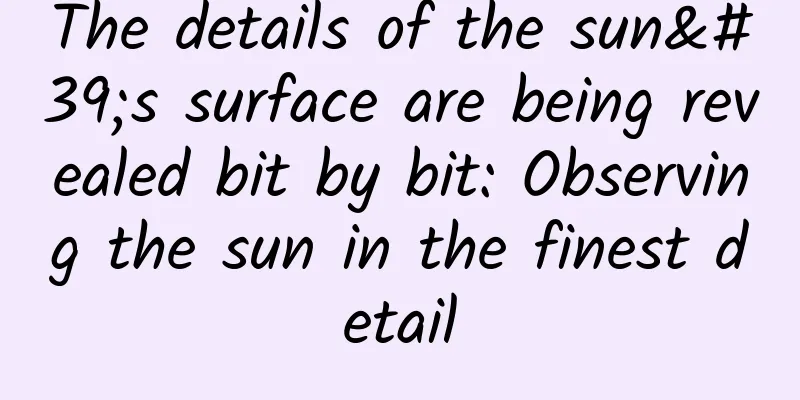After measuring 12,000 moonquakes since the Apollo moon landing, humans have not measured any more for 43 years.

|
【Mobile software: Bo Ke Yuan】Since the Apollo moon landing program, when astronauts deployed several measuring stations at different locations on the lunar surface and unexpectedly discovered that Earth's only natural satellite is far from seismically inactive, NASA has not measured lunar earthquakes for 43 years. Terry Hurford, a geophysicist at NASA's Goddard Space Flight Center in Greenbelt, Maryland, got his wish, and he is now developing the next generation of highly rugged seismometers with partners at Arizona State University. One of the innovative new technologies and systems NASA will use under the Artemis program to explore the Moon in greater detail is the Subsurface Lunar Research and Monitoring Experiment, whose data will not only map the Moon's interior, from the surface to the core, but will also alert astronauts to lunar seismic events (moonquakes). NASA's Development and Advancement of Lunar Instrumentation (DALI) is supporting this research effort. Before the Apollo moon landings, scientists were unaware of the Moon's tremors. Illustration: Unlike past systems, the next generation of seismometers can be deployed autonomously. In this photo, Apollo 12 astronaut Alan Bean carries the Apollo Lunar Surface Experiments package to its deployment site on the moon. From 1969 to 1977, instruments deployed as part of NASA's Apollo Lunar Surface Experiment (ALSEP) recorded 12,000 moonseismic events, including meteor impacts and deep and shallow moonquakes, ranging in strength from less than 3 magnitude to as high as 5 magnitude. But in 1977, NASA shut down the ALSEP array, and although scientists are still mining the ALSEP data, knowledge of the moon's interior is still nascent and limited. Therefore, it is important to learn more about the moon's interior and provide astronauts with an early warning system. One of the key instruments will be a seismometer, specifically one that is easily deployable, rugged, and relatively inexpensive to build, with performance standards expected to be of the highest order. The research team is designing such equipment specifically so that it can be deployed by NASA or commercial lander or rover systems, regardless of terrain and mission duration, with the long-term goal of establishing a seismic network. Already relatively mature thanks to investments from several past NASA technology development projects and Goddard's Internal Research and Development (IRAD) program, it is expected to be nearly ready for deployment once DALI funding ends in three years. System Improvements Five other teams involving Goddard experts have received DALI grants to advance the development of other instruments, ensuring the center plays a role in NASA's next era of exploration. Suplime offers better performance than other systems: After the Apollo lunar network was fully deployed, there were several efforts to build planetary seismometers. NASA eventually sent them aboard the Mars Viking missions, the Venus 13 and 14 missions, and now the Mars InSight mission, NASA's first mission dedicated to exploring below the Martian surface. Illustration: The Mars Insight mission's seismometer is the best yet; however, a deployment arm must position it. Apollo-era instruments are sensitive to tilt, so astronauts must orient them. While the Mars InSight instrument is the best-performing planetary seismometer yet, its sensor system is very large and a complex robotic arm is required to deploy the instrument. SupliMe is based on molecular electronic sensors (METs), a technology that Arizona State University is contributing to this effort. METs are used in terrestrial seismology and rely on a fluid that responds to earthquake acceleration. Fluid flows through a sensing element that generates a measurable electrical current, providing highly accurate ground motion data. The beauty of the MET technology is that it is rugged and easy to deploy. The unit will include three sensors oriented in different directions within the instrument housing. For example, if the package tumbles and falls on its side, the orientation will not impair SUPRIME's ability to collect data and locate the source of seismic activity. In other words, the instrument package does not need to be precisely positioned to do its job, and it has no moving parts and can be easily manufactured. NASA Goddard technologists helped improve the sensor design, including additional seals and better ways to mount the sensor, but the most important contribution was the readout electronics, which feature advanced radiation-hardened application-specific integrated circuits (ASICs) that minimize the instrument's mass and power requirements. Bo Ke Yuan | Research/From: NASA Goddard Space Flight Center BoKeYuan|Science, technology, research, popular science Follow [Bokeyuan] to see more beautiful cosmic science |
<<: Three thousand years after his death, the head of state made an official visit to France
>>: The reason for the wage increase is actually written in the Nobel Prize in Economics!
Recommend
Mobei Class Foreign Trade SEO Promotion Google SEO (Google SEO) Tutorial (2-7 Periods 10-11 Periods) Value 3490 yuan
The fifth session of Mobei Kefan Foreign Trade Go...
The vibrant green is actually the color of death?
This painting, in bright green, makes the whole r...
Baidu invests $100 million in NIO to accelerate autonomous driving project
Recently, NIO completed a $100 million Series D f...
Hyundai's next-generation fuel cell SUV combines the advantages of range and style
Hyundai Motor has unveiled its next-generation fu...
Finally! It has been made clear: it is forbidden to make and publish videos of overeating, which is very harmful
It is shameful to waste food, and overeating is h...
How did smartphones become a diplomatic weapon for major powers?
Recently, there were news reports that Russian Pr...
Online promotion channels for product operation and promotion plans!
In the mobile Internet industry, the market for g...
The information flow master with 5 years of experience will teach you new ideas for wedding photography advertising!
A master with 5 years of experience in informatio...
New Media Operations: How to create a popular article opening?
In this era of impetuous information explosion, t...
How to get new users? The method of attracting new customers is for old customers to bring in new ones!
How to acquire new users is the core topic in the...
Making charging as fast as refueling, GAC Aion's super-speed battery technology and A480 super charging pile debut globally
On August 30, GAC Aion held an online press confe...
How to use data thinking to design? Take a look at this practical case!
When we enter the daily experience design process...
Is rock core more valuable than gold? The "golden key" to the door of "finding oil and gas" is not called that for nothing!
The core is like a thick geological history textb...
Recycling goods at low prices, a high-profit money-making project in the sinking market
As we all know, with the development of the Inter...
BYD: BYD passenger car sales in February 2023 were 191,664 units, a year-on-year increase of 112.3%
BYD's passenger car sales in February 2023 we...









